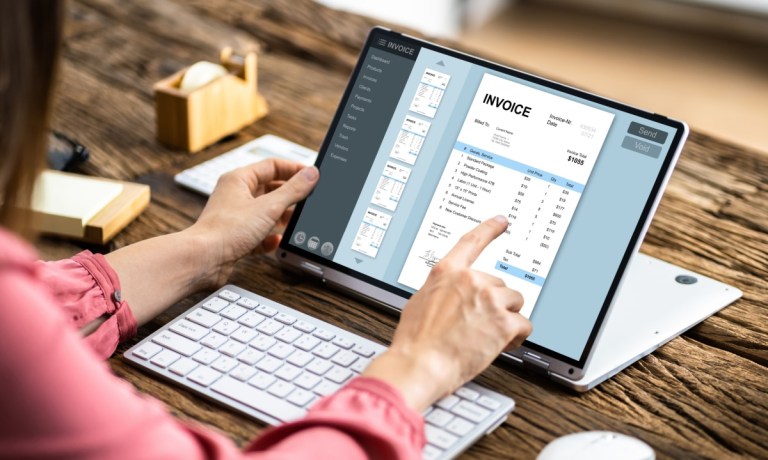
How B2B suppliers bill their customers is changing around the world. And with the announcement last week (March 26) that the first e-invoice had been successfully sent across the U.S. Digital Business Networks Alliance Open Exchange Network (DBNAlliance), interest in the benefits of e-invoicing solutions is rising.
“The successful transmission of this invoice from the U.S. to the Netherlands highlights the network’s ability to facilitate intercontinental exchanges. Looking forward, billions more invoices are anticipated in the years ahead,” said Dolf Kars, CEO at e-invoicing provider Storecove and DBNAlliance board member in a statement.
After all, as B2B payments themselves go increasingly digital, why shouldn’t B2B invoices follow suit?
E-invoices, including their associated transactional documents such as purchase orders, payment terms, and credit notes are created and transmitted in a structured digital format, such as XML (Extensible Markup Language) or EDI (Electronic Data Interchange). This allows for seamless integration with accounting software, ERP (Enterprise Resource Planning) systems, and other financial management tools — and provides firms with many benefits compared to the traditional ways of mailing or faxing paper invoices, or relying on PDFs or email attachments.
Already, more than 80 countries have put in place a mandate for e-invoicing or continuous transaction control (CTC) requirements as governments around the world look to prioritize tax reform and real-time reporting.
But the move towards e-invoicing is not merely about converting a paper invoice into a digital format; it’s about reimagining the entire B2B invoicing process to be more streamlined and better integrated into digital business ecosystems. The workflow transformation promises to reduce errors, lower costs, and speed up B2B payment processes, offering substantial benefits to companies of all sizes.
As PYMNTS reported, Sovos, a global tax software provider, on Thursday (March 28) joined forces with PwC in Belgium to streamline the adoption of e-invoicing among businesses, a signal of the shifting landscape of business operations towards digitalization.
Still, different countries have their own regulations and requirements regarding e-invoicing — making it essential for multinational businesses to ensure compliance with disparate local requirements.
See also: 2023 Looms as Banner Year for eInvoicing in the US
Businesses in North America are not required to provide e-invoicing, but that operational reality could change as more and more countries implement their own requirements and e-invoicing directives.
In the European Union (EU), for example, e-invoicing regulations are decided — and divided — on a country-by-country, versus nation-bloc, basis. This makes understanding the legal requirements in various operating regions as well as staying informed about the ongoing developments in e-invoicing legislation crucial for multinational businesses.
While in the U.S., the complexities of the state and local tax systems make a comprehensive mandate for e-invoicing adoption a challenging task, dozens of countries around the world could be soon rolling out their own mandates as part of a global trend toward the complete digitalization of tax reporting and remittance.
But as businesses look to navigate the confusing zig-zag of government regulations, technical specifications, and uncertain timelines, the marketplace is already responding with new innovations and solutions.
See also: Real-Time Treasury Management Pays Off for Multinationals
Zuora and Avalara last fall announced an expanded partnership to help companies meet the e-invoicing mandates and digital reporting requirements that countries around the world are adopting, while Thomson Reuters in October 2023 unveiled its own centralized platform designed to streamline electronic invoicing management for multinational businesses.
PYMNTS Intelligence data has found that nearly half (45%) of small and medium-sized businesses (SMBs) cited manual invoice review as a problem when making payments, with 19% saying it was their top issue.
Electronic invoicing speeds up the invoicing process by eliminating delays associated with mail delivery and manual data entry. Invoices can be sent instantly, and payment processing can be automated, leading to faster payment cycles.
And given the pace the rest of the world is taking when it comes to implementing e-invoice mandates and embracing the digitization of business processes, observers believe it is not out of the question for the U.S. to join them.
After all, the Federal Reserve already paved the path toward U.S. e-invoicing standards back in a 2016 paper titled “U.S. Adoption of Electronic Invoicing: Challenges and Opportunities,” and the Fed wrote back then, “A major barrier identified by U.S. businesses to adopting electronic payments is the willingness of their trading partner’s ability to send or receive automated electronic information (e.g. invoice and remittance information).”
Now, eight years later, the willingness of trading partners to send and receive electronic invoice information — as well as, increasingly, their ability to do so — is all but a guarantee.